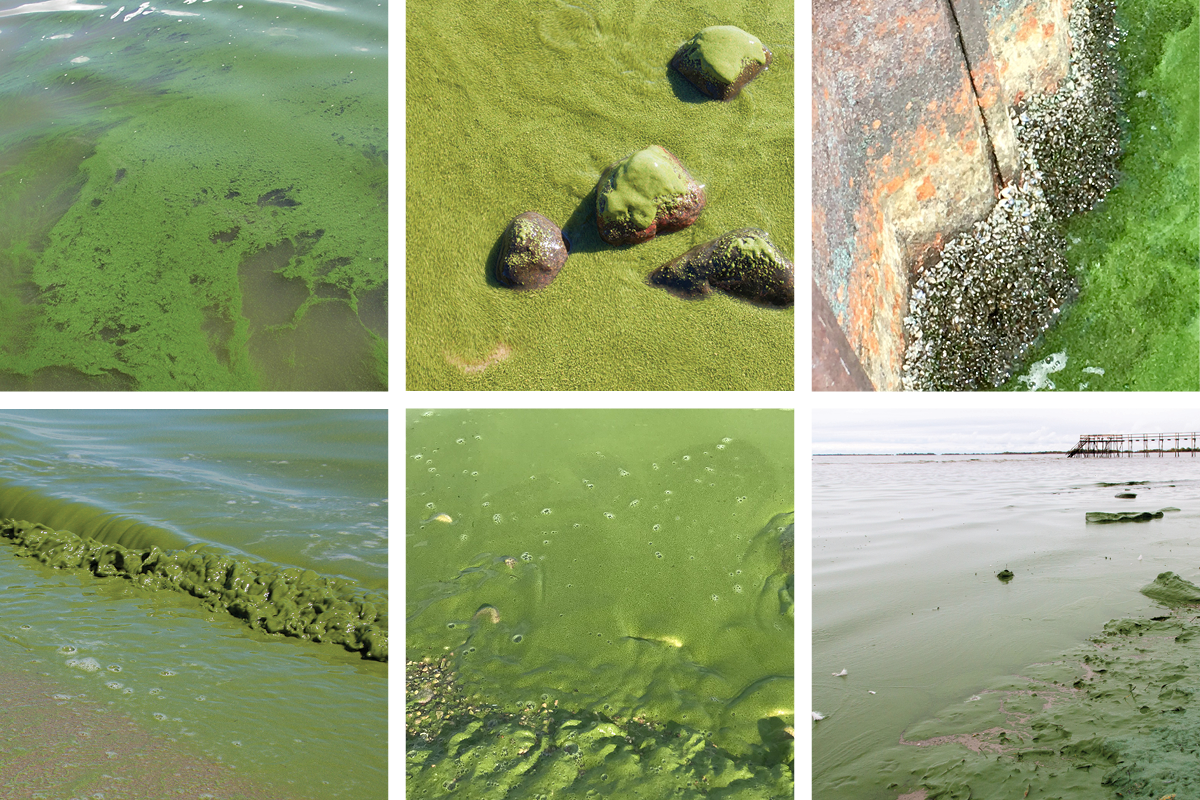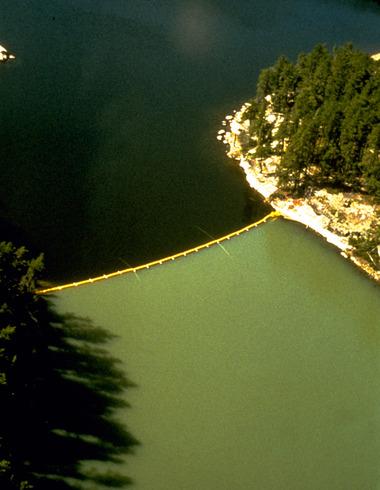
algal blooms on lake winnipeg
Lake Winnipeg is the world’s 10th largest freshwater lake, with a watershed that spans two countries, four provinces, four states and over 100 Indigenous nations. It defines Manitoba’s geography, sustains vital ecological biodiversity, drives local economies and livelihoods, and is essential to cultural and spiritual identity.
Over the last 30 years, Lake Winnipeg’s water quality has deteriorated. Eutrophication – the overfertilization of freshwater ecosystems with the nutrient phosphorus – has resulted in increasingly frequent algal blooms on the lake.
These potentially toxic algal blooms have economic, health and environmental implications: they contaminate beaches, reduce water quality, and threaten the communities and industries that depend on the lake.

Excessive phosphorus loading to Lake Winnipeg has been driven primarily by human activities across the surrounding landscape, including municipal wastewater treatment, wetland drainage and agricultural practices such as livestock production.
The intensity and severity of algal blooms has been exacerbated by the effects of a changing climate: increased precipitation carries more phosphorus into freshwater ecosystems, while warming water temperatures accelerate algae growth and provide competitive advantage to toxic cyanobacteria over other algal species.
understanding the causes and controls of eutrophication

In the 1960s, when algae blooms first plagued the Great Lakes, the government of Canada established the Experimental Lakes Area, a one-of-a-kind freshwater research facility in northwestern Ontario comprised of 58 small lakes and their surrounding watersheds. Created to answer questions about eutrophication, this unique natural laboratory conducts whole-ecosystem experiments which mimic real-world situations, making scientific conclusions more reliable than those based on small-scale lab studies.
The first experiments tackled at the Experimental Lakes Area (now known as IISD-ELA) were designed to identify the cause of algal blooms on freshwater lakes. Several nutrients were put to the test.
In the middle of Lake 226, a plastic curtain was installed. Carbon and nitrogen were added to one side of the lake, while carbon, nitrogen and phosphorus were added to the other side. Only the half which received phosphorus produced algal blooms. The answer was clear.
Another experiment, on Lake 227, is the world’s longest-running controlled study on algal blooms – it began in 1969 and continues to this day. At first, researchers routinely dosed the lake with excessive amounts of both phosphorus and nitrogen. Over the years, the amount of nitrogen added was gradually decreased and, in 1990, researchers stopped adding it completely. Algal blooms continued to appear in Lake 227 with the same intensity because of the ongoing addition of phosphorus. Nitrogen reduction had no effect.
Our responses to urgent environmental challenges must be based on the best-available data, and decades of research at IISD-ELA have demonstrated that in order to control algal blooms, we must focus on phosphorus.
Together with our members, LWF is advancing evidence-based solutions to reduce phosphorus loading to Lake Winnipeg in order to improve the health of this vital freshwater ecosystem.